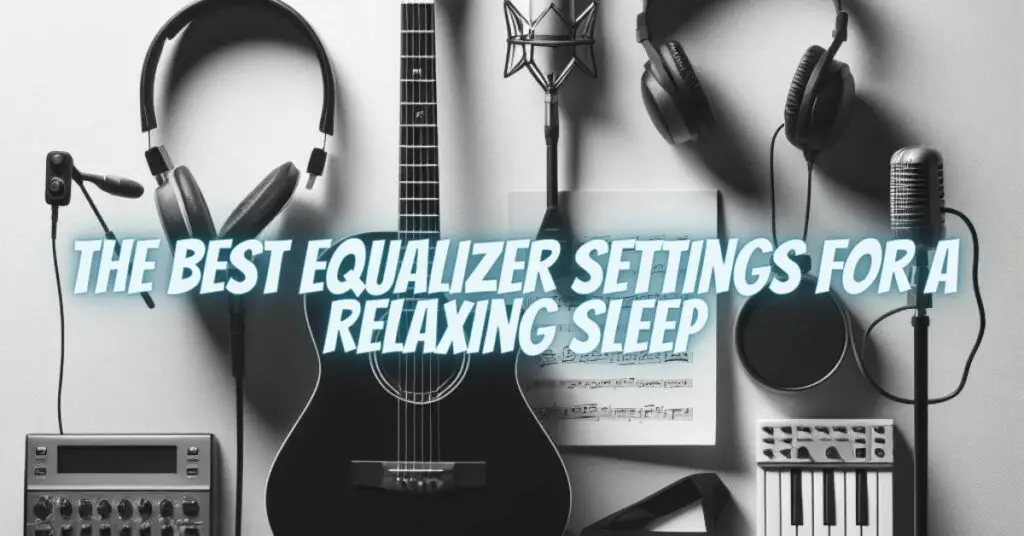Music and audio can play a significant role in creating a soothing and relaxing atmosphere conducive to sleep. By using an equalizer to adjust the sound frequencies of your sleep audio, you can enhance the overall experience and improve the chances of a restful night’s sleep. In this article, we will explore the best equalizer settings for sleep, allowing you to customize your bedtime audio to your preferences.
The Importance of Bedtime Audio
Many people find that gentle, calming sounds or music can help them relax and fall asleep more easily. The right audio can mask disruptive noises, reduce anxiety, and create a peaceful sleep environment. Using an equalizer to fine-tune these audio sources can make the experience even more enjoyable.
Best Equalizer Settings for Sleep:
When adjusting your equalizer settings for sleep, the goal is to create a soothing and relaxing audio environment. Here are some recommended settings and considerations:
- Reduce High Frequencies:
- Lower the higher frequencies (treble) to create a warmer and less harsh sound. Reducing frequencies above 8 kHz can soften the audio.
- Boost Low Frequencies:
- Enhance the lower frequencies (bass) to add depth and fullness to your audio. A gentle boost in the 100Hz to 250Hz range can make the sound more soothing.
- Adjust the Midrange:
- Fine-tune the midrange frequencies between 400Hz and 2kHz to emphasize the natural, calming tones of your chosen audio. This helps create a balanced sound.
- Apply a Gentle V-Shaped Curve:
- A gentle V-shaped EQ curve can be effective for sleep audio. Slightly lower the treble and midrange frequencies while gently boosting the bass, creating a warm and comforting sound.
- Cut or Boost as Needed:
- Use your ears as your guide. If specific frequencies in your sleep audio are too prominent or distracting, make adjustments as needed. For example, cut frequencies that are too harsh or boost those that contribute to relaxation.
- Experiment with White Noise or Nature Sounds:
- For those who prefer white noise or nature sounds for sleep, consider enhancing specific elements of the audio. Boosting gentle rain sounds in the lower frequencies or adding a hint of wind in the midrange can create a serene atmosphere.
- Consider Personal Preferences:
- The best equalizer settings for sleep can vary from person to person. Experiment with different settings to find the combination that resonates with your personal preferences and helps you relax.
- Volume Control:
- Adjusting the volume is equally important. The volume should be low enough to not disrupt your sleep but loud enough to mask background noise or distractions.
Using Sleep Apps and EQ Settings:
Many sleep apps and devices come with built-in EQ settings and presets tailored for bedtime audio. These presets are often designed to provide a relaxing and soothing soundscape, making it easier for you to fall asleep. Explore the EQ settings in your sleep app or device and see if they align with your preferences.
Adjusting equalizer settings for sleep audio can significantly enhance your bedtime experience by creating a soothing and relaxing atmosphere. By reducing harsh frequencies, boosting soothing bass, and experimenting with different settings, you can tailor your bedtime audio to your liking. The key is to create a soundscape that helps you unwind, drowns out unwanted noise, and fosters a peaceful environment for restful sleep. Sweet dreams!

